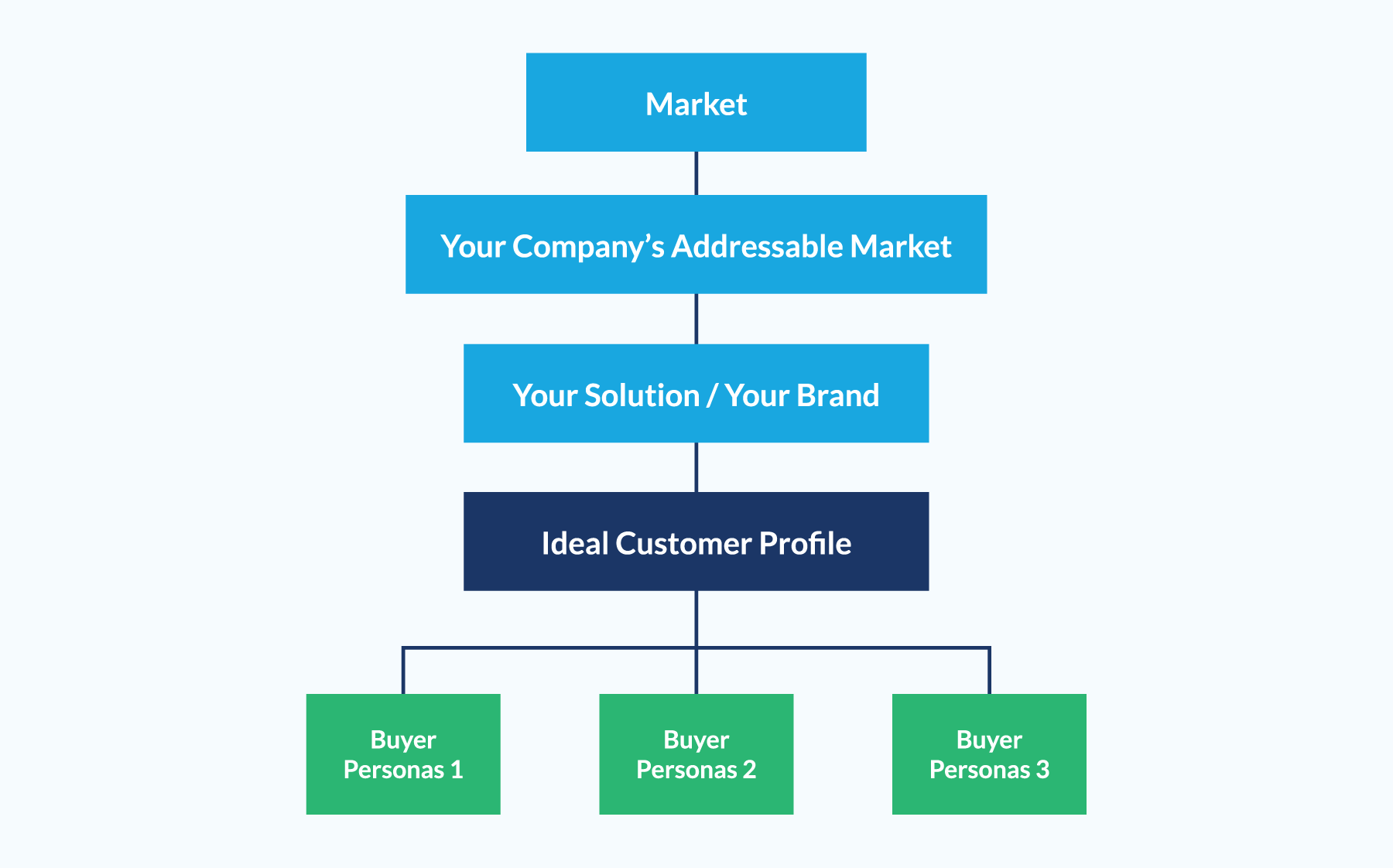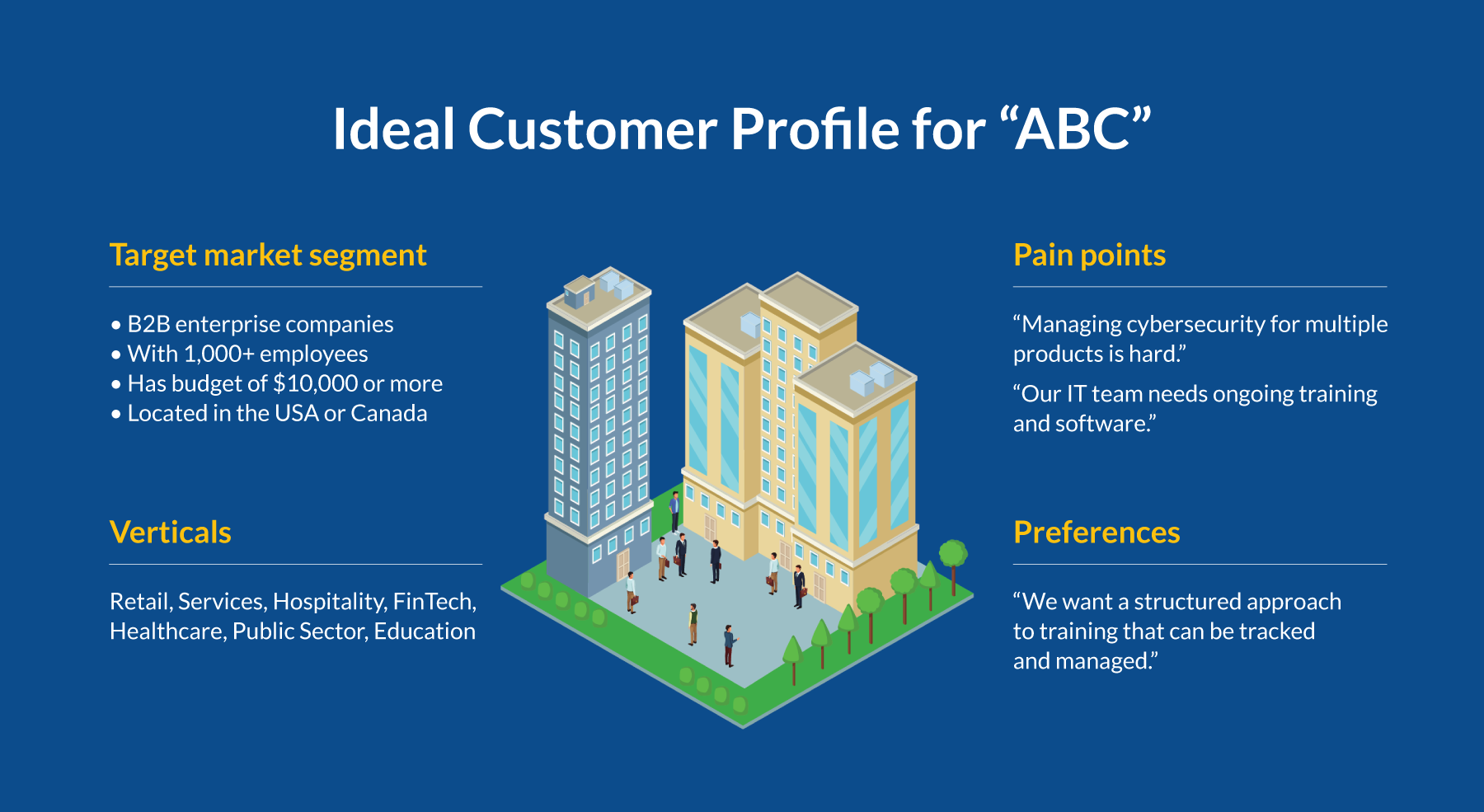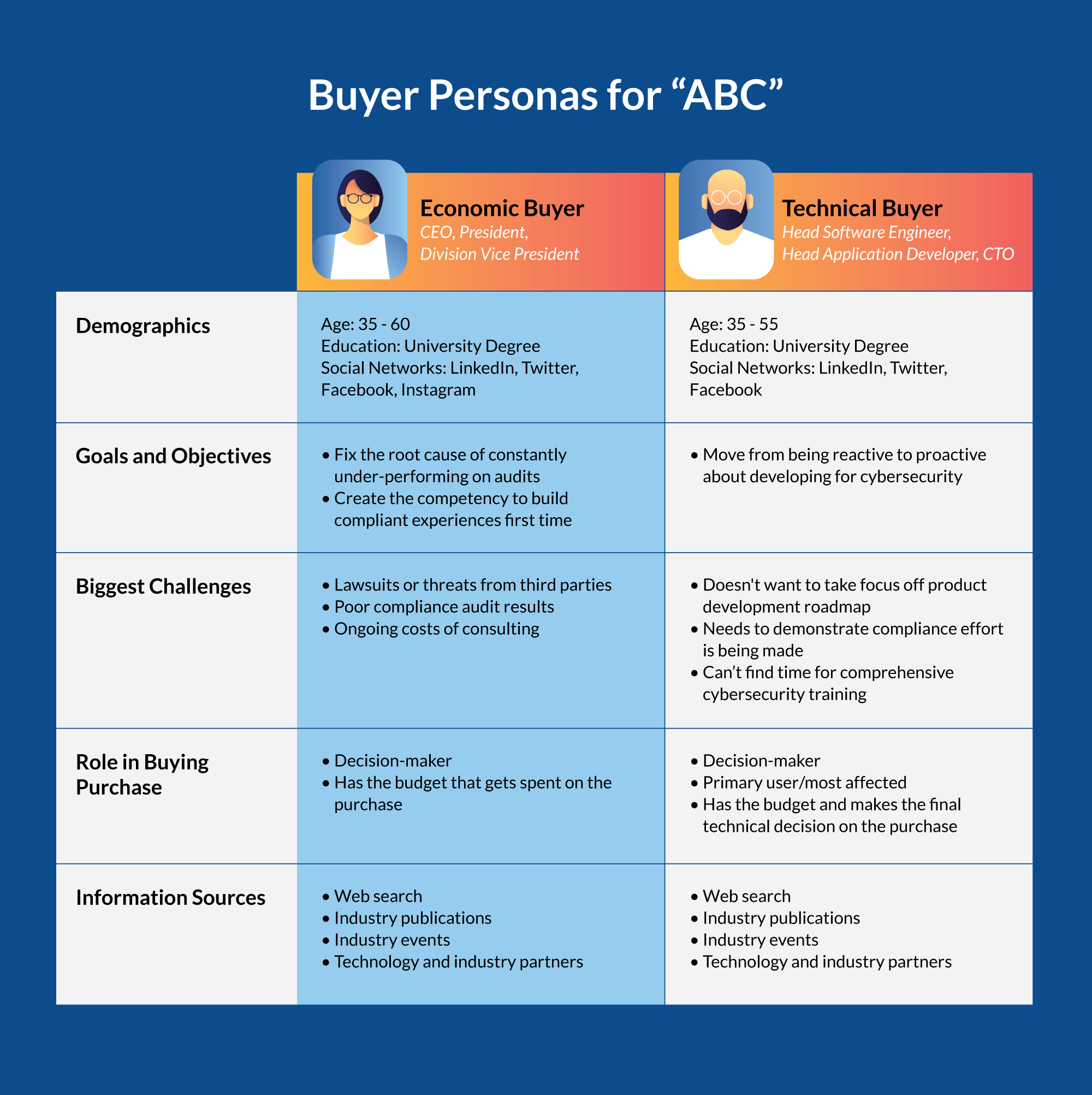Understanding and segmenting your audience is a vital part of marketing and sales strategy. We use terms like customer profile or buyer persona to identify and communicate who we’re trying to reach. But while ICP (ideal customer profile) and buyer persona are often used interchangeably, they’re not actually the same thing. And confusing (or misusing) them can reduce the efficacy of your campaigns.
If you’re not 100% clear on the difference (or if you just want to be sure you’re getting it right), follow along as we explore ICP vs. buyer persona: their similarities, their differences, and why you need to keep them straight.
Defining Customer Profile vs Buyer Persona
There is a lot of overlap between ICPs and buyer personas. So let’s start with the basics. What is an ICP and what is a buyer persona?
What is the Ideal Customer Profile?
An ideal customer profile (ICP) describes the buyer who is a great fit for your product and, therefore, most likely to make a purchase. ICPs typically include a list of attributes a buyer needs to be successful as your customer.
An ICP is an indispensable tool for defining the market problems you can solve, qualifying sales-ready leads, and informing future product releases. (We published a post on using ICPs for sales and marketing not that long ago — check it out if you still need more detail.)
What is a Buyer Persona?
A buyer persona is an archetype that captures the buying patterns you observe through market research and your sales team’s experience. Buyer persona profiles offer a more focused picture of individuals who are part of the purchase decision and include details about personality, demographics, values, challenges, role in the buying process, motivations, and where they look for ideas and new information. The information included in buyer personas has evolved over time — check out our post on creating effective personas to learn more.
Does the Difference Really Matter?
ICPs and buyer personas are two sides of the same coin. You can’t have one without the other, but each side is unique — and the difference between them is critical.
ICPs are focused on account fit. They don’t go into detail about the individuals your team will encounter along the B2B buyer journey, but they’re vital for ensuring alignment between sales and marketing teams on lead scoring and qualification processes.
Buyer personas, on the other hand, provide structure and context to map out and curate content for the various influencers and decision-makers in that account. Creating buyer personas helps you put a face and personality on your target audience and provides a human connection between you and your prospects. It’s always easier to communicate with someone you know than with a stranger.
How Do ICPs and Personas Fit Together?
If your ICP is your big picture, your buyer personas break it down for more details. Break your ideal customer profile down into groups that share similar characteristics — those are your personas.
The following diagram shows how all these moving parts fit together, from the wide-open market to individual personas.

ICPs and Personas: B2B Examples
In a typical B2B space, your ideal customer will define which companies are a good fit for your offering. Your buyer personas are the people at those companies you need to reach to achieve conversion. Let’s compare the sample profile we created for my post on ICPs to a few sample personas for the same imaginary firm.


Ideal Customer Profile vs Buyer Persona in Sales Enablement
There is no more important one when comparing ICPs vs. buyer personas in sales enablement. Both sides of the coin hold equal weight and value. It’s the strategy behind them that gives them both meaning. And the strategy here is to improve sales efficiency and increase predictable results. Both ICPs and personas streamline the sales experience in several ways.
Pro Tip: You should have your ICP and buyer personas defined before planning product launch activities, but it’s never too late to start. If your solution is already out in the market, do it anyway. Gather your teams to develop a plan or hire a third-party agency for help.

1. Narrowing Down Your Target Buyers
Sending every lead to sales is a waste of time. Not everyone is suited to your solution, and it’s important to filter out the bad-fit leads early in the sales cycle using lead scoring and qualification, key elements of your sales enablement framework.
Ideal Customer Profile
- Identify accounts that are a great fit for your offering
Buyer Persona
- Understand the people involved in purchase decisions at those accounts
- Create content that speaks to them in the appropriate tone and style, at the right point in their journey
2. Improving Leads’ Customer Experience
Sellers today have few opportunities to influence customer decisions, so meeting buyers where they are is crucial to driving revenue and growth. Defining your ICP and buyer personas is the first step to achieving your goals.
Ideal Customer Profile
- Build targeted paid ad campaigns on social media
Buyer Persona
- Create content that addresses key concerns or questions at various stages of the buyer journey
Starting the sales process with great-fit leads and nurturing them throughout each step of the buyer journey is a surefire way to boost customer happiness and retention, thus increasing your revenue and customer loyalty.
3. Achieving Organization-Wide Alignment
Defining an ICP and buyer personas is a strategic exercise that ensures alignment across your entire organization. While a siloed approach to managing departments that owned entire processes was popular in the past, lines between teams are blurred in today’s buyer journey, making key processes cross-functional. (This nexus is essentially the birthplace of sales enablement.)
ICP and buyer persona definitions are an opportunity to create a common language throughout the sales process. High-growth organizations have buy-in on ICPs and buyer personas from top to bottom, with leadership taking an active role in monitoring the performance and impact of both.
Still Not Clear on ICP vs. Buyer Persona?
Buyer profile? Ideal customer persona? If you’re still unsure how (or why) to create either, TPM can help. Our team of marketing experts can help you develop ICPs and personas and build campaigns to target either. Let us turbo-charge your sales and marketing efforts. Drop us a line today.
Enjoyed this read?
See our full collection of Sales Enablement blogs to close more deals, faster!
